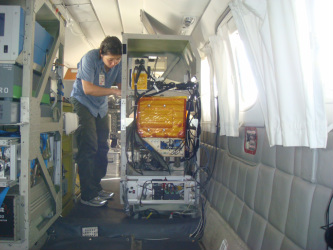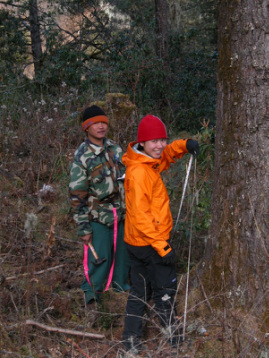my research
|
The rising trend in atmospheric carbon dioxide (CO2) concentrations and the ability to make meaningful projections of these concentrations are particularly important for the study of our global climate and for designing programs for emissions reductions and potential “carbon trading” offsets. Atmospheric CO2 concentrations are the main inputs for assessing source/sink distributions on global scales.
To determine the contributions from the major regions of the world to the global CO2 budget, net fluxes of CO2 from the surface on regional to continental scales need to be determined, resolved weekly/monthly, and accurately summed annually. I make trace gas observations (via tower and aircraft measurements) and then use these observations to develop and constrain a model to better understand the effect of the Brazilian Amazon on the global CO2 budget. In collaboration with researchers from Germany and Brazil, I successfully completed two aircraft campaigns over the Brazilian Amazon. The Balanço Atmosférico Regional de Carbono na Amazônia (BARCA) campaigns made a suite of atmospheric measurements during the ‘dry to wet’ and ‘wet to dry’ transition periods in November 2008 and May 2009 respectively. Building on the work of John C. Lin and Christoph Gerbig, who developed the atmospheric transport model STILT, and Pathmathevan Mahadevan, who created the biosphere model VPRM, I constructed an atmosphere-biosphere model for the Amazon Basin. By using satellite- and surface-data in combination with aircraft-data, I constrained large-scale regional surface fluxes of CO2 for Amazonia. Using classical Bayesian and Maximum Likelihood Estimation methods I can optimize the biosphere parameters and from there the CO2 budget can be determined using environmental data from remote sensing and assimilated meteorology. For more information about my research and what happens in the Wofsy-Munger group, take a look at this feature on research in Brazil in the Environment@Harvard Fall/Winter 2011 magazine from the Harvard University Centre for the Environment. |

